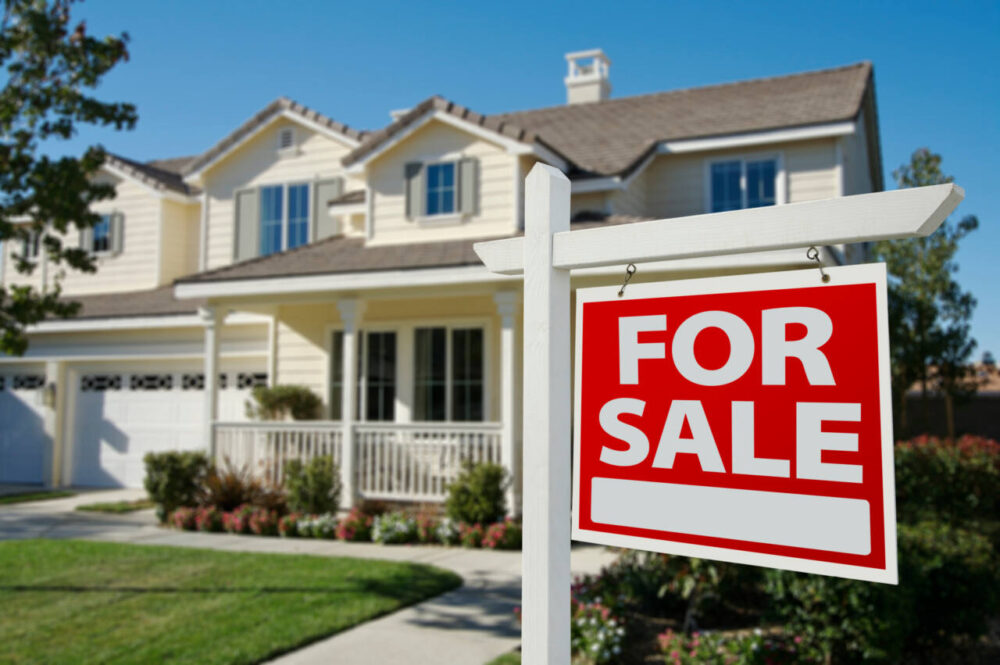Did you know that in nearly all U.S. states, single women outpace single men when it comes to homeownership? Using figures from the U.S. Census Bureau, analysts from LendingTree, an online lending marketplace, recently reported that nationwide, single women today own 2.71 million more homes than their male counterparts.
The statistics are especially interesting when you consider that women have historically faced more home-buying hurdles than men. A long-standing gender pay gap persists, with women earning, on average, 82% of what men earn, according to a 2022 analysis from the Pew Research Center.
That figure hasn’t budged much in the past two decades, as women in 2002 were earning 80 cents on every dollar that men were making. Not only that: prior to the women’s “mortgage liberation” in 1974, it was commonplace for banks to require women buyers to have male co-signers.

Recent Study Confirms Data Collected Since 1981
However, the fact that more single women own homes than men isn’t anything new.
The National Association of Realtors (NAR) says that every year since 1981 when it began collecting this data, more single women than men have bought homes. However, LendingTree’s analysis found that the gap has recently been widening: In 2021, single women in the U.S. owned 10.76 million homes compared to the 8.12 million owned by men. The gap grew by an additional 70,000 homes in 2022, the findings show.
Still, even with having an edge, a study from Yale found that single women typically pay 2% more when they’re purchasing a home compared to men, but get 2% less than men when they go to sell.
Why Do More Single Women Own Homes Than Single Men?
So, why — despite having more financial barriers to homeownership — are single women among the highest demographic buying homes, second only to married couples?
Real estate experts cite a number of reasons.
The top reason both single men and single women buy homes is, simply that they want to be homeowners, according to NAR. But the data also shows that double the number of women compared to men reported buying homes so that they could be near friends and family members.

MORE: How to find out who lived in your house before you
Also, stability is at play: Single women are more likely to buy a home if they have children or want to have a home for a multi-generational living arrangement, the NAR findings show.
LendingTree analysts point out that women outlive men, so widows may account for some of the single homeowners. The analysts also suggest that women are also willing to make more sacrifices to make owning a home a reality.
States Where Single Women Have the Biggest Homeownership Edge
Single women outnumber single men in homeownership in all but three states, which are New Mexico, Nevada and Alaska, according to the recent LendingTree report.
Meanwhile, the top 10 states where the biggest gender gaps in homeownership between single women and men exist are Delaware, Maryland, Massachusetts, New Jersey, Louisiana, North Carolina, Florida, Alabama, New York and Virginia.
In the No. 1 state, Delaware, 15.34% of households were owned and occupied by single women, while just 9.45% of households were occupied by single men. That’s a difference of 5.89 percentage points.
MORE: Easy home improvements that’ll instantly boost your home’s curb appeal

Tips for Buying a Home as a Single Person
Thinking about buying a home as a single person? Here are five expert tips to consider when you’re shopping for a home and a mortgage, which aren’t exclusive to single buyers but are definitely worth keeping top of mind.
1. Shop around for competitive mortgage rates.
Only about one-third of prospective homeowners shop around for a mortgage, but when you compare rates you have a higher chance of saving money on your loan. A separate LendingTree study found that shopping around for rates helps buyers in big cities save more than $84,000 over the life of their loans. When you’re shopping for mortgages, some points of comparison should include factors such as interest rates, total monthly payment and closing costs.
2. Be aware of gender discrimination.
If you suspect a lender or seller is discriminating against you because of your gender, LendingTree recommends filing a complaint with the U.S. Department of Housing and Urban Development or with your city’s housing commission.
3. Determine your non-negotiables.
One of the advantages of buying a home on your own is you don’t need to factor in another person’s priorities. Before you start looking, list your non-negotiables, says Monica Breese, founder of New York City-based home design and staging firm The Designed Domicilio and a real estate broker with Compass. This could be things like the size of the home, neighborhood, or home type, she says. Then, make a list of the bonus features you’d love to have — like a pool, a fireplace, a bathtub, outdoor space, exposed brick, and so on.

4. Have emergency savings.
If you were to have an emergency or lose your job, experts recommend having a three- to six-month emergency savings plan in place. NerdWallet recommends building up your savings and putting funds into a high-interest savings account so that it can earn you interest while it’s stashed away.
5. Budget for home maintenance
Owning a home can come with more expenses than renting since you may need to pay for maintenance, appliance repairs, or even HOA special assessments to cover shared spaces. The general rule of thumb is that you should plan to set aside 1%-2% of the cost of your home each year for general maintenance, repairs and upkeep.
Study confirms that single women in US own more homes than single men originally appeared on Simplemost.com
> > SIGN UP for the Simplemost weekly newsletter < <
This story originally appeared on Simplemost. Check out Simplemost for additional stories.


